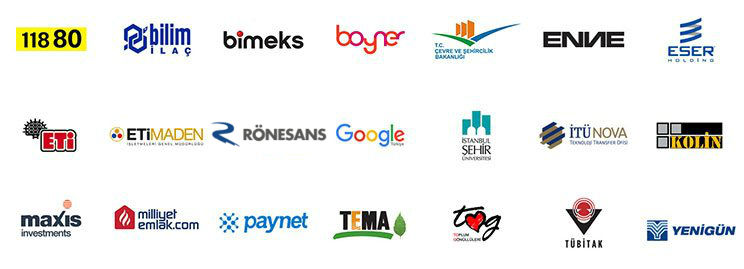
Bringing the decision to custom software development to the table in a medium or large business is a significant display of leadership and vision.
This is a strategic step taken to solve a complex operational problem for which standard solutions are insufficient or to create a unique competitive advantage in the market.
However, this strategic decision brings with it serious and legitimate questions that occupy the minds of C-level executives and department leaders.
How will this significant capital investment pay off in the long run?
How can we ensure the success of the project not only at the time of delivery but throughout its 5-10 year lifecycle?
This guide is designed to manage not only the initial excitement of a custom software investment, but also its long-term health and profitability.
Our topic is two critical disciplines that form the foundation of every successful corporate project: proactive, long-term risk management and concrete return on investment (ROI) analysis.
Post-Decision Strategic Concern: "How Will We Manage This Asset in the Future?"
As a tech-savvy manager, your primary concern goes much deeper than whether the project will "get done."
Your primary concern is what will happen one, three or five years after the project is delivered.
Custom software is not a one-time expense, but a living, breathing asset that adds to a company's balance sheet.
Therefore, the questions asked at the board or project approval meeting will be:
"What happens if the key engineers who developed this software leave the company?"
"In five years, will we have the talent in the market to understand and update this technology?"
"Will we experience performance issues as the software's database grows?"
“How do we protect this particular application against new cybersecurity threats that are constantly emerging?”
When these questions are not proactively answered, even the brightest ideas may be met with hesitation at the approval stage, or worse, may turn into a major technical crisis in the future.
The Language of Numbers: The Reality of Failure in Enterprise Software Projects
These concerns are not unfounded; the risks inherent in enterprise IT projects are well-established by industry data.
Analyses from organizations like The Standish Group's "CHAOS" reports or the Project Management Institute (PMI), which have been tracking IT project success rates for years, consistently show that a significant percentage of large-scale software projects struggle to achieve their goals.
Many of these projects overrun budget or schedule, failing to deliver the full value originally promised.
But more worrisome for tech-savvy leaders are the “day two” issues after the project is delivered.
Due to inadequate documentation, non-standard coding practices, and outdated technology stacks, many projects that appear to be "successfully completed" become unmaintainable, unupdatable, and unscalable within a few years.
This causes the initial investment to quickly evaporate, leaving the company with expensive "technical wreckage."
Building Your Castle: Long-Term and Strategic Risk Management
Protecting your custom software investment is not just about following the project plan, but also about securing the entire lifecycle of the software.
What Are the Most Critical Risks in an Enterprise Software Project? (and Their Solutions)
Beyond the basic project management risks (scope, budget, time), there are deeper risks that strategic leaders should focus on:
Technology and Talent "Orphaned"
This is perhaps the biggest strategic risk. If the team or individuals developing the project leave, they'll be left with a pile of code that no one understands, lacks documentation, and is unmaintainable.
Choose the right technology stack from the outset of the project. Choose modern, standard technologies that are widely used and have a large developer community (e.g., popular JavaScript frameworks, .NET, Java, widespread cloud services). Ask your software developer for comprehensive, "living" technical documentation that explains every piece of code. This will make it easier for a new team to take over the project in the future.
Technical Debt and Long-Term Maintenance Burden
"Easy" but "wrong" technical solutions chosen to save time during a project often have to be fixed later at much greater cost. Over time, this "debt" accumulates, making it impossible to update the software or add a new feature.
Insist on high-quality coding standards, regular code reviews, and automated testing processes. Include an annual "technical debt payment and maintenance" line item in the project budget from the outset. This is a proactive approach to maintaining the health and up-to-dateness of the software.
Security and Performance Optimization
The application cannot maintain its performance under increasing data load and number of users or becomes vulnerable to new cyber threats.
Require that the software architecture be designed for scalability from the outset. Ensure regular performance and load testing throughout the project. On the security front, ensure your software house adheres to industry-standard security principles, such as the OWASP Top 10, and conducts regular security scans. A strong Service Level Agreement (SLA) clarifies your expectations and response times on these matters.
How Does the MVP (Minimum Viable Product) Approach Reduce Enterprise Risk?
An MVP is the most effective way to break down a large vision into manageable, less risky steps. Instead of launching a massive project with all the features, you start with a smaller version that includes the most essential, most value-generating core functionality. This reduces business risk because:
- 1) It reduces the initial investment cost.
- 2) It allows you to quickly test your idea with real users and collect valuable feedback.
- 3) This feedback allows the rest of the project to focus on the features that are truly needed.
Proving the Value of Investment: ROI and TCO Analysis for Senior Management
Managing risks protects your investment, and ROI analysis proves why the investment is worth making.
Understanding Total Cost of Ownership (TCO) Correctly
TCO is not just the development cost of a software product, but the total of all the estimated costs over its 5-10 year lifecycle. Using this analysis when presenting to the board provides transparency and insight. The TCO calculation should include:
-
Initial Investment: Analysis, design, development, testing and deployment.
-
Infrastructure and Operations: Server/cloud costs, licenses, annual maintenance and support (SLA) fees.
-
Internal Resource Cost: The cost of salaries and time of your own staff involved in the project.
-
Future Development and Update Budget.
How to Calculate Return on Investment (ROI) at the Enterprise Level?
ROI is the metric that most clearly shows the financial value of a project.
ROI (%) = [ (Net Return on Investment - Total Cost of Ownership) / Total Cost of Ownership ] x 100
Determine Cost: Use the TCO analysis above.
Quantify Earnings: At the corporate level, earnings typically come from:
-
Increased Operational Efficiency: "Thanks to this software, we will automate the 200 man-hours per week that our 50-person operations department spends on manual data entry, which translates to an annual savings of X TL."
-
Cost Reduction: "The new process will reduce the waste rate in production by 5%, which will save YTL of raw materials annually."
-
Creating New Revenue Streams: "This platform will enable us to implement a new 'Z as a Service' model that our competitors cannot offer, creating the potential for an additional turnover of 0 million TL in the first three years."
-
Compliance Risk Reduction: "Automatic reporting will eliminate the risk of errors and the cost of potential legal penalties associated with manual reporting."
Common Corporate Mistakes in Risk Management
-
Seeing Risk as Only the IT Department's Problem: Technology continuity and security are strategic risks that concern the entire business and are the direct responsibility of the project sponsor.
-
The “Magic Wand” Expectation: Assuming that technology will single-handedly fix broken underlying business processes or a weak business model.
-
Neglecting Contract and SLA Details: In the excitement of the project, ignoring the legal and operational documents that govern the project's "divorce" or "problem moment" scenarios.
Future Risk Management: Predictive Analytics and Managed Infrastructures
In the future, risk management will be less reactive and more predictive. Artificial intelligence can learn from historical project data to predict potential budget overruns or schedule delays weeks in advance. However, new models are emerging to mitigate the "technology and talent continuity" risk we mentioned. For example, managed custom software development infrastructures like Digita Technologies' SmartRise create custom solutions for you on a standard, modern technology stack. This approach offers all the flexibility of custom software, while taking the burden off your shoulders by leaving key risks like infrastructure maintenance, security, and up-to-dateness to a specialized team.
Conclusion: Risk is not an obstacle, but a strategic variable that can be managed.
Investing in enterprise-level custom software inherently involves significant commitments and risks.
However, successful managers view these risks as manageable variables rather than fearing them and being trapped by the constraints of standard solutions.
When you're armed with a solid risk management framework, a transparent TCO analysis, and a compelling ROI presentation, your custom software project ceases to be an uncertain gamble.
This translates into a strategic corporate asset, each step of which is calculated, protected and proven, ensuring the future competitiveness, efficiency and agility of your business.
At Digita Technologies, we develop secure, scalable, and long-lasting custom software solutions tailored to the unique needs of enterprise businesses with our SmartRise infrastructure. Contact our expert team to discuss how we can minimize risk and maximize the value of your investment.






